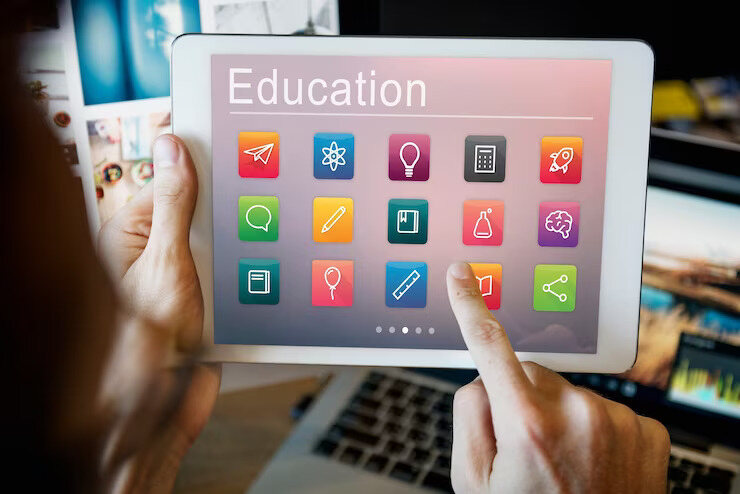In today’s fast-paced digital era, the influence of social media is undeniable, permeating every aspect of our lives, including education. The impact of social media in education has become a pivotal topic as these platforms continue to shape the way we learn and share information. This blog explores the various dimensions of this impact, shedding light on the positive transformations and challenges that arise when social media and education intersect.
The Impact of Social Media in Education:

Access to Information:
Social media platforms serve as vast repositories of information, providing students with a wealth of educational content. From scholarly articles to interactive videos, learners can access a diverse range of materials at their fingertips.
Collaborative Learning:
Platforms like Facebook, Twitter, and Instagram facilitate collaboration among students and educators. Online forums and groups create virtual spaces where ideas can be shared, questions discussed, and collaborative projects undertaken, fostering a sense of community.
Real-time Updates:
Educational institutions leverage social media to disseminate real-time updates, announcements, and event information. This instant communication keeps students in the loop, creating a more connected and informed academic community.
Enhanced Communication:
Social media platforms break down traditional communication barriers, enabling students to interact with teachers, experts, and peers globally. This democratisation of communication enhances the learning experience.
Global Perspective:
Exposure to diverse perspectives and cultures is heightened through social media. Students can connect with their counterparts worldwide, gaining a broader understanding of global issues and perspectives.
Challenges and Concerns:

Distraction and Productivity:
The flip side of increased connectivity is the potential for distraction. Striking a balance between educational engagement and avoiding the pitfalls of endless scrolling requires conscious effort.
Privacy and Security:
Educational institutions must address concerns related to the privacy and security of student data. Implementing robust guidelines and policies is crucial to mitigate potential risks.
Misinformation:
The abundance of information on social media demands a critical eye. Students need to develop digital literacy skills to discern credible sources from misinformation.
Conclusion:
The impact of social media in education is undeniably trans formative, with both positive and negative effects. Harnessing the potential of these platforms for educational purposes requires a thoughtful and strategic approach. By embracing the advantages while addressing the challenges, educators can create a dynamic and enriching learning environment that prepares students for the digital age.

FAQ:
Q: How can educators effectively integrate social media into the classroom?
A: Educators can start by creating private groups for class discussions, sharing relevant content, and encouraging collaborative projects. Establishing clear guidelines on usage and promoting digital literacy is essential.
Q: What steps can be taken to ensure the privacy and security of student data on social media platforms?
A: Educational institutions should implement strict privacy policies, educate students on online safety, and collaborate with social media platforms to ensure compliance with data protection regulations.
Q: How can students avoid the distraction of social media while studying?
A: Setting designated study periods, using website blockers, and establishing a dedicated study space can help students minimize distractions and stay focused on their academic tasks.

